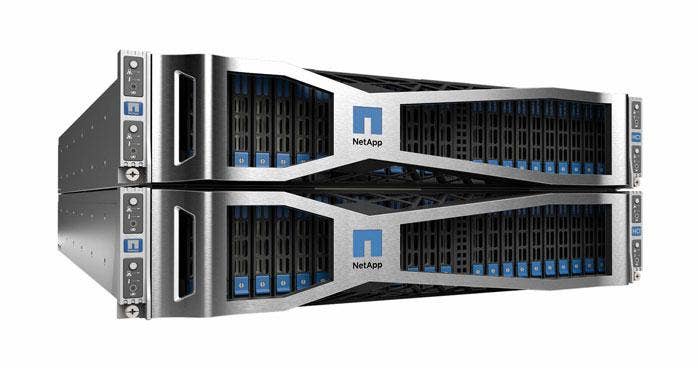‘Rock-Solid’ NetApp HCI Sales Soaring Triple Digits

NetApp HCI is storming the hyper-converged infrastructure market with triple-digit sales growth in its recent third fiscal quarter and winning multimillion-dollar enterprise deals.
“A lot of the business that we’ve done are seven-figure deals, multimillion-dollar opportunities with HCI,” said Jeff McCullough, vice president of Americas partner sales for NetApp, in an interview with CRN. “They’re heavy-lift workloads in health care, in financial services—these aren’t trying to move a small application to an HCI platform, these are really solving tougher enterprise-class applications. … Our HCI platform is growing triple digits, obviously coming off a small base, but we’ve come into this market with a very different value proposition.”
The Sunnyvale, Calif.-based all-flash and hybrid cloud data services specialist planted its hyper-converged stake in the ground in late 2017 with NetApp HCI. The enterprise-centric platform is based on SolidFire and its Element software, which allows for workload protection for applications.
[Related: NetApp CEO Kurian On HCI, Cloud And Growth Prospects]
McCullough said NetApp is pushing channel partners to drive enterprise hyper-converged sales by beating the competition through market differentiators including the platform’s ability to offer the flexibility of scaling compute or storage nodes independently, allowing customers to decouple compute and storage capacity scaling.
“NetApp allows more customization of independent compute and storage scalability from a competitive standpoint. So when you take multi-tenancy, independent compute and storage, plus all the ease of management and expansion that HCI provides—that’s our solution portfolio,” he said.
Robert Keblusek, CTO of Sentinel Technologies, a Downers Grove, Ill.-based NetApp partner, said NetApp had a slow start with HCI but now has a “rock-solid product” for many workloads.
“They weren’t even represented on the HCI Gartner Magic Quadrant, but we feel that if they were they would be one of the top-right players. Customers appreciate the scale-up and -out of the platform and architecture and performance is outstanding for workloads such as VDI, especially in health care and other use cases where there are large volumes of VDI deployed,” said Keblusek. “With the flexibility in scale, it allows our customers to scale the platform where the workloads demand and avoids some of the locked-in scaling ratios of competing products.”
NetApp ranks third in terms of worldwide storage market share at 5.8 percent with $842 million in sales, up 15 percent year over year, according to fourth-quarter storage data from research firm IDC. Chris Lamborn, head of worldwide channel strategy and programs at NetApp, said the company is leveraging its all-flash storage leadership position to help win HCI deals.
“Partners are saying to customers, ‘Why aren’t you looking at all-flash?’” said Lamborn. “Look at the benefits of flash in an HCI environment and now start to look at where NetApp sits and how that expands and how you drive it into the broader piece.”
In addition, the solution includes NetApp’s Data Fabric unified suite of data services that provides consistent data services across on-premises, private cloud and public cloud platforms.
The hyper-converged market grew to nearly $5 billion during the 12-month span ending July 2018, representing an increase of 72 percent year over year, according to IDC. In the second quarter of 2018 alone, hyper-converged sales reached $1.5 billion, up 78 percent year over year, according to IDC, with market leaders including Dell, Nutanix, Cisco Systems and Hewlett Packard Enterprise.
NetApp has created a slew of strategic partnerships around HCI including with Veeam and VMware, as well as the recently unveiled VMware Validated Design for Private Cloud with NetApp HCI. The vendor is investing in channel training and enablement around NetApp HCI with plans to add new features and functionality.
Although NetApp HCI is currently designed for the enterprise, the company is looking to take the platform downmarket.
“Right now, we’re focused on enterprise customers, but that doesn’t mean we don’t have our eyes set on some of the smaller workload requirements,” said McCullough. “We have aspirations to continue to expand our portfolio.”